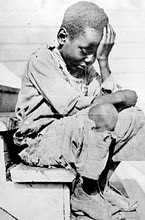Child Drivers In Yemen's Civil War: A Humanitarian Crisis

Table of Contents
The Gruesome Reality of Child Drivers in Yemen's Conflict
Recruitment and Exploitation
Children in Yemen are recruited, often forcibly, to drive vehicles for various armed groups. Their vulnerabilities—extreme poverty, orphanhood, lack of education, and the collapse of societal structures—make them easy targets for exploitation. The recruiters prey on their desperation, offering meager payments or false promises of safety and security.
- Methods of Recruitment: Forced abduction, coercion through threats or intimidation, promises of food and shelter.
- Ages of Children Involved: Children as young as eight years old have been documented driving vehicles in the conflict.
- Types of Vehicles Driven: The children are forced to drive a range of vehicles, from light trucks and ambulances to heavier military vehicles, often under hazardous conditions.
While precise statistics on the number of child drivers in Yemen remain elusive due to the ongoing conflict and limited access to information, anecdotal evidence and reports from humanitarian organizations paint a deeply disturbing picture of widespread exploitation. The lack of reliable data underscores the urgent need for improved monitoring and data collection mechanisms.
The Dangers Faced by Child Drivers
The dangers faced by child drivers in Yemen are immense, both physically and psychologically. They are constantly exposed to the horrors of war.
- Risk of Death or Injury from Combat: Children are at extremely high risk of death or serious injury from airstrikes, shelling, and direct combat.
- Exposure to Violence and Trauma: Witnessing violence, death, and suffering on a daily basis inflicts severe psychological trauma.
- Lack of Training and Safety Precautions: These children lack any formal driving training or safety knowledge, putting themselves and others in grave danger.
- Potential for Abduction or Enslavement: Once recruited, these children are often held against their will, effectively becoming prisoners of war, subjected to abuse and forced labor.
Reports from reputable organizations like UNICEF and Human Rights Watch detail numerous incidents where child drivers have been killed or injured, highlighting the extreme risks they face. These children are not soldiers; they are victims, forced to participate in a conflict they do not understand.
The Humanitarian Consequences of Using Child Drivers
Violation of International Law
The use of child drivers in Yemen is a flagrant violation of international humanitarian law and children's rights conventions. It directly contravenes several key treaties and articles:
- Geneva Conventions: Specifically, the Geneva Conventions prohibit the recruitment and use of children in armed conflict.
- UN Convention on the Rights of the Child (UNCRC): The UNCRC explicitly protects children from all forms of exploitation and abuse, including their forced participation in armed conflict. Article 38 is particularly relevant.
The systematic violation of these international legal instruments underscores the severity of the crisis and the urgent need for accountability.
Long-Term Impact on Children
The physical and psychological scars inflicted upon these children are often lifelong. The consequences extend far beyond the immediate conflict:
- Mental Health Issues: PTSD, anxiety disorders, depression, and other mental health issues are prevalent among child drivers.
- Physical Injuries: Amputations, burns, and other serious physical injuries are common.
- Difficulty Integrating Back into Society: These children often struggle to reintegrate into civilian life, facing social stigma, discrimination, and a lack of support.
- Lack of Access to Rehabilitation Services: Limited access to adequate healthcare, psychosocial support, and rehabilitation services further compounds their suffering.
These children require specialized care and long-term support to overcome the trauma and rebuild their lives.
Impact on Civilian Populations
The use of child drivers also contributes significantly to the broader humanitarian crisis, impacting civilian populations caught in the crossfire:
- Increased Risk of Civilian Casualties: Improperly trained child drivers increase the risk of accidents and civilian casualties.
- Disruption of Essential Services: The use of vehicles driven by children can disrupt the delivery of humanitarian aid and essential services.
- Exacerbation of Existing Humanitarian Needs: The conflict's overall impact is intensified by this specific violation of human rights.
The humanitarian crisis in Yemen is already immense; the exploitation of child drivers adds another layer of complexity and suffering.
Addressing the Crisis: Strategies for Protection and Intervention
International Efforts and Humanitarian Aid
International organizations, including the UN and various NGOs, play a crucial role in providing aid and advocating for the protection of child drivers in Yemen:
- Specific Organizations Involved: UNICEF, Save the Children, Human Rights Watch, and others are actively involved in providing humanitarian assistance and advocating for child rights.
- Types of Aid Provided: Food, shelter, medical care, psychosocial support, and education are crucial components of aid efforts.
- Advocacy Efforts: These organizations lobby governments and international bodies to hold perpetrators accountable and implement stronger protection measures.
Increased funding and support for these organizations are vital to strengthening their efforts.
Legal and Policy Solutions
Robust legal frameworks and accountability mechanisms are critical to preventing the use of child soldiers, including drivers:
- International Criminal Justice Mechanisms: The International Criminal Court (ICC) and other international mechanisms should actively pursue prosecutions of individuals responsible for recruiting and using child soldiers.
- National Laws and Policies: Yemen needs to strengthen its national laws and policies to criminalize the recruitment and use of children in armed conflict.
- Truth and Reconciliation Initiatives: Post-conflict truth and reconciliation processes can play a vital role in addressing past abuses and preventing future violations.
Strengthening international and national legal frameworks is essential for preventing future atrocities.
Community-Based Initiatives
Community-level interventions are crucial to protect children and support their rehabilitation:
- Education Campaigns: Raising awareness within communities about the dangers of child recruitment is vital.
- Community-Based Support Programs: Providing psychosocial support, education, and vocational training to vulnerable children can help prevent their recruitment.
- Reintegration Initiatives: Supporting the successful reintegration of former child soldiers into their communities is critical for their long-term well-being.
Engaging local communities is crucial for sustainable change.
Conclusion
The use of child drivers in Yemen's civil war represents a catastrophic humanitarian crisis, inflicting devastating physical and psychological harm on children and exacerbating the suffering of the civilian population. The blatant violation of international law demands urgent action. We must collectively strive to end this horrific practice. Help stop the exploitation of child drivers in Yemen. Donate to organizations fighting for children's rights in Yemen, learn more about the crisis, and take action to end the use of child drivers in Yemen. Let's work together to ensure that the children of Yemen are protected and given the chance to thrive, not merely survive.

Featured Posts
-
 Extra Long Nails A Beauty School Perspective
May 06, 2025
Extra Long Nails A Beauty School Perspective
May 06, 2025 -
 Update Gregg Popovichs Status With The San Antonio Spurs
May 06, 2025
Update Gregg Popovichs Status With The San Antonio Spurs
May 06, 2025 -
 Beauty School Extra Long Nails An Experts Watch
May 06, 2025
Beauty School Extra Long Nails An Experts Watch
May 06, 2025 -
 Demi Moores Daughters Cryptic Ashton Kutcher Comment And Instant Regret
May 06, 2025
Demi Moores Daughters Cryptic Ashton Kutcher Comment And Instant Regret
May 06, 2025 -
 Colman Domingos Met Gala Experience A Podcast Interview On Fashion And Romance
May 06, 2025
Colman Domingos Met Gala Experience A Podcast Interview On Fashion And Romance
May 06, 2025
